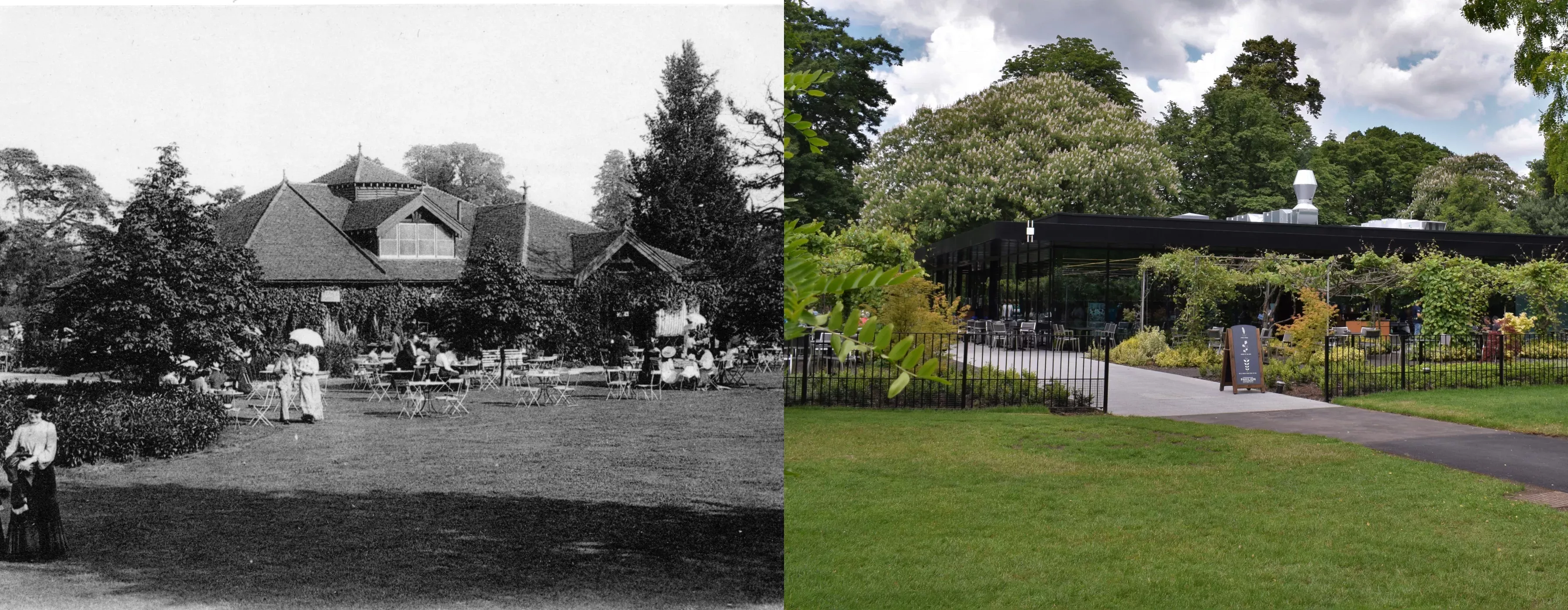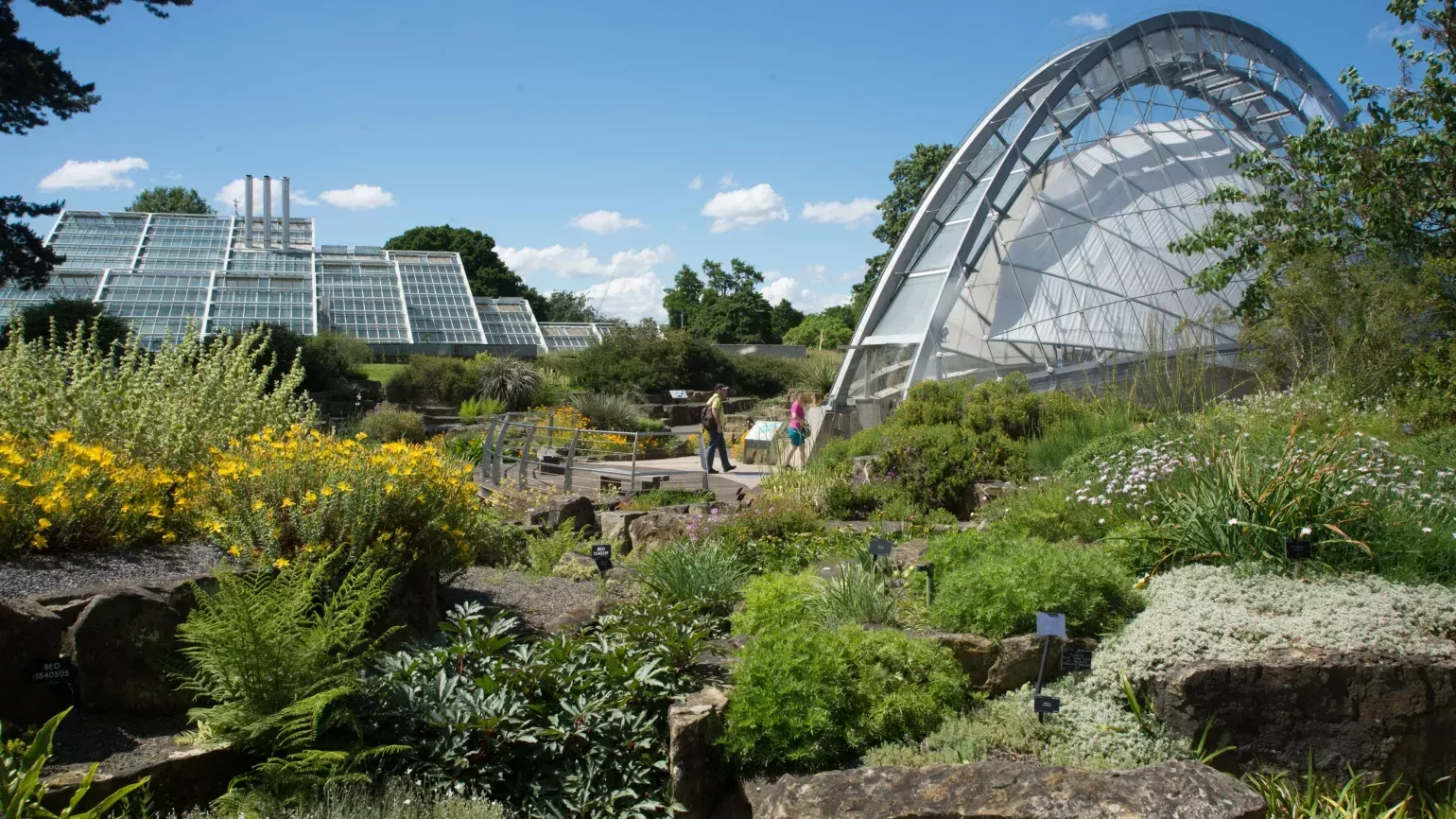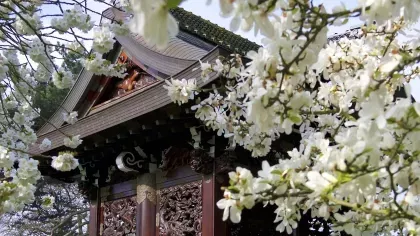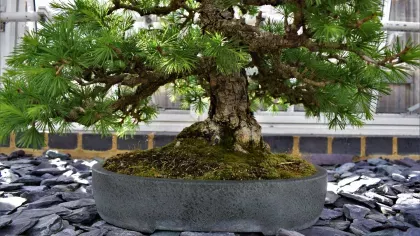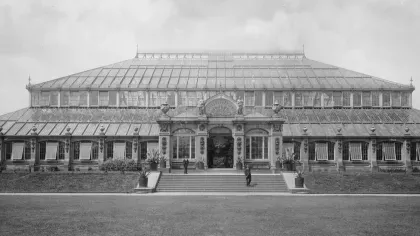5 July 2019
In Pictures: Kew Gardens, then and now
2019 marks the 260th anniversary of Kew Gardens. We take a look at some then-and-now photos to see how much the Gardens have changed.

Kew Palace
Formerly known as the Dutch House, Kew Palace is the oldest building in the Gardens. Constructed in 1631 for a wealthy Flemish merchant, Samuel Fortrey, the ornate property was rented by Queen Caroline around a century later.
Subsequently bought by King George III, the palace was used as a country retreat by the royal family up until 1898.
This old black and white photo from our archives was taken sometime between 1898 and 1910. Things look a little different here today with a new path, trees and none of the Edwardian fashion.
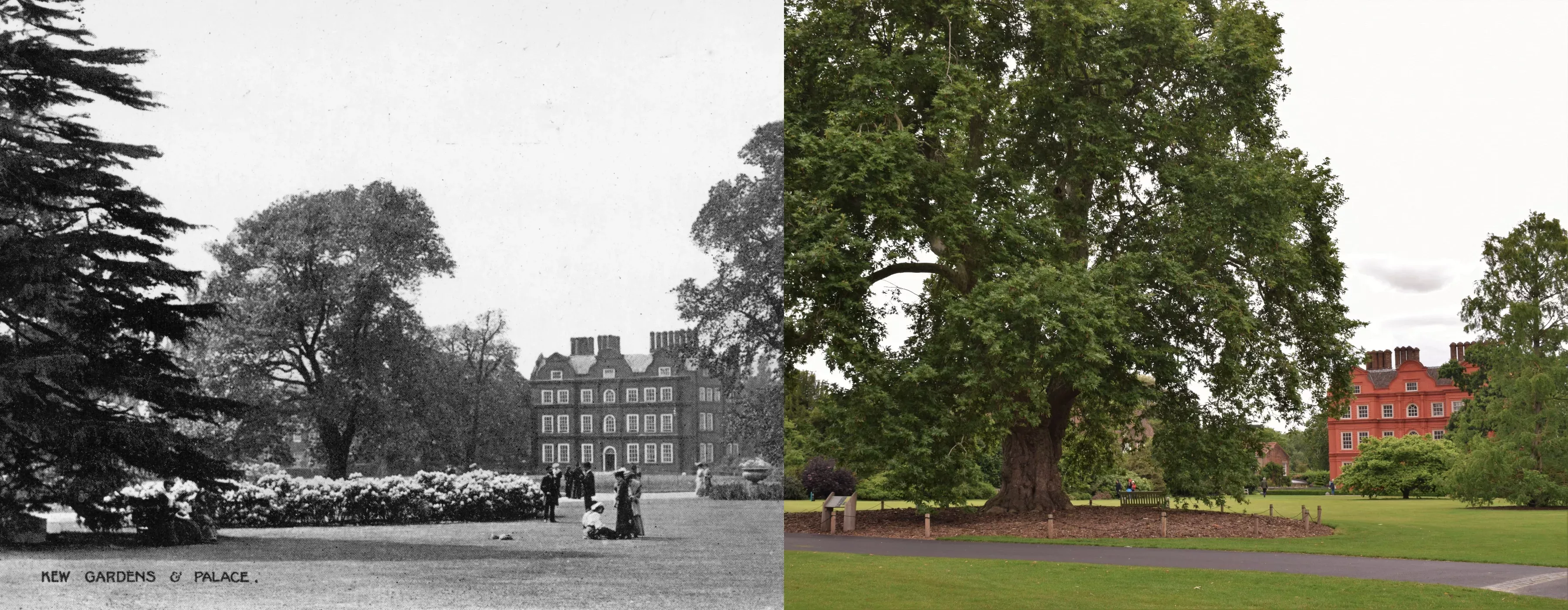
Palm House
Taken way back in 1847, this historical snap captured the original Palm House while it was still under construction.
It was the first ever image taken of the exterior of the glasshouse and was achieved by using the daguerreotype process, the first commercially successful photographic technique.
You'll notice the dark edges around the photo – this is because the silver coating of the daguerreotype plate was oxidised due to a failed seal around the border of the plate.
Nowadays, you'll find the Rose Garden showing off its stunning blooms in this space next to the Palm House.
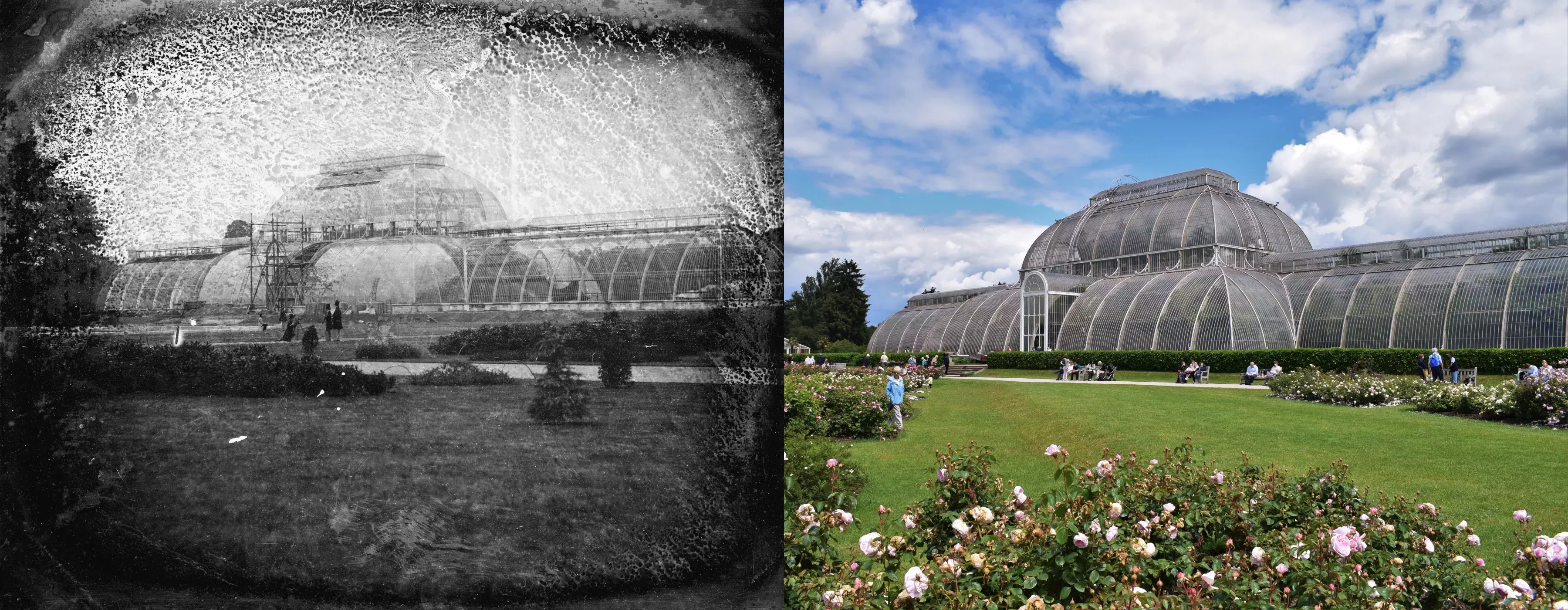
Great Broad Walk Borders
Whether in 1890 or the present day, our Great Broad Walk has always been a pleasant place to stroll.
But since the herbaceous borders were replanted in 2016, the promenade is even more appealing, boasting a beautiful array of colours, textures and fragrances.
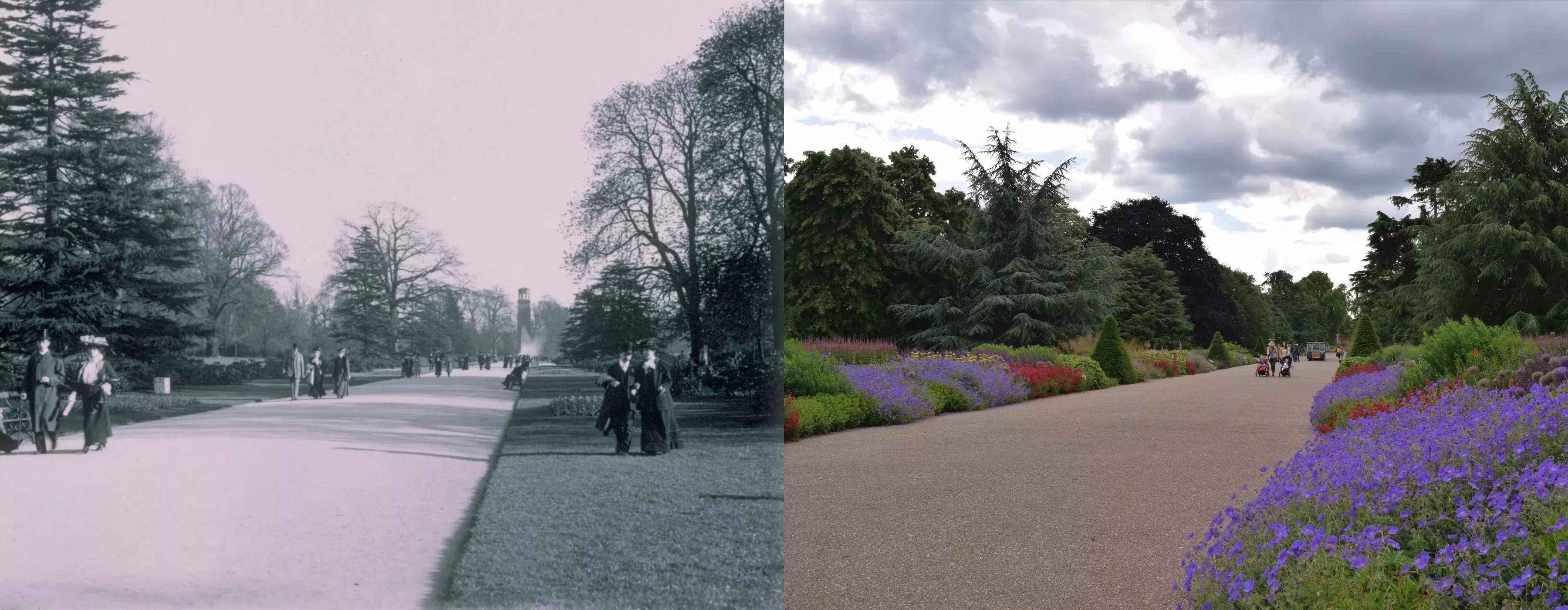
Temperate House
This archive image of our spectacular glasshouse was snapped in the 1890s. The Temperate House took several decades to build, from 1862 to 1899, and first opened in 1863 only three-quarters complete.
Even after undergoing two major restorations in the 1970s and 2010s, the iconic building looks almost identical.

Japanese Gateway
Spot the difference! Our original Japanese Gateway was gifted to Kew in 1910 after its inclusion in the Japan-British Exhibition in London.
Fast forward 109 years and the ‘Chokushi-Mon’, or ‘Gateway of the Imperial Messenger’ almost looks untouched. This replica of the Karamon Gate of the Nishi Hongan-ji Temple in Kyoto was restored in 1994, using a mix of traditional Japanese skills and modern innovative techniques.
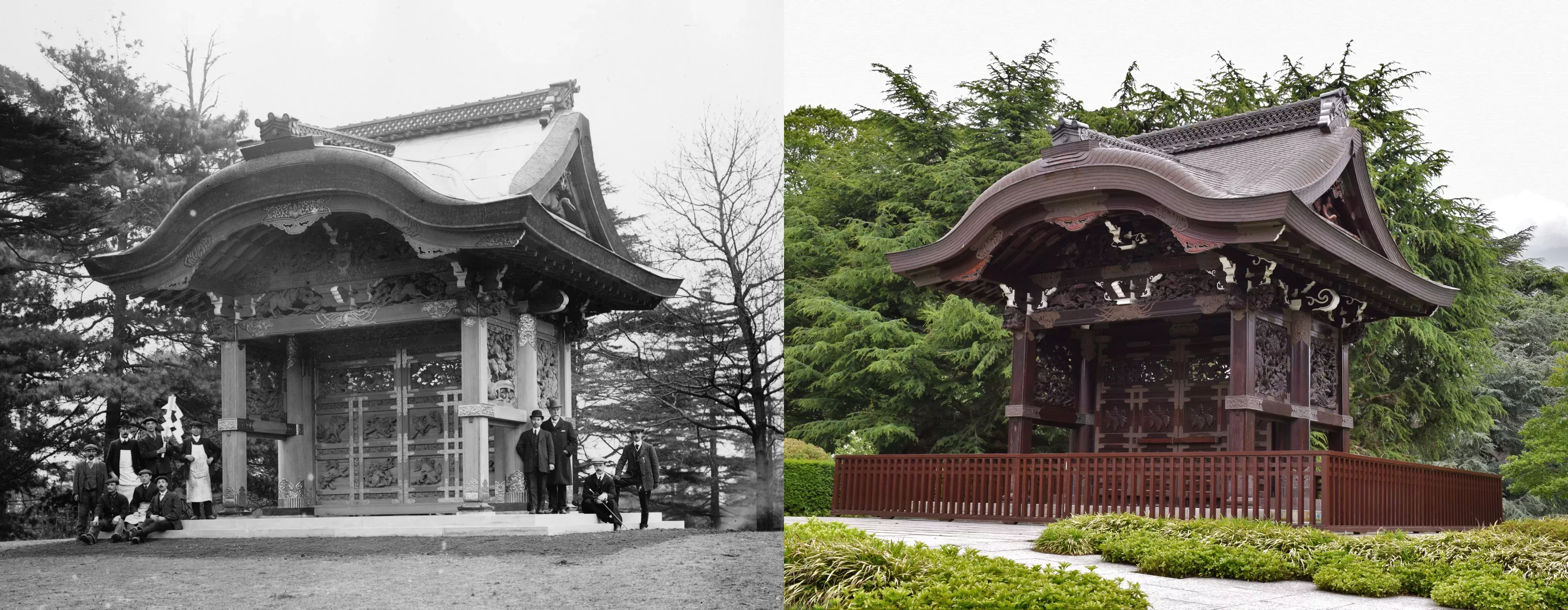
Inside the Palm House
Time has clearly passed between these two photos. One is the bare bones of the glasshouse as it was being built on 24 July 1847. The other is bursting with green tropical life.
The black and white image was the first ever photograph of the Palm House interior and was captured using the original daguerreotype process.
The two men in the image are believed to be architect Decimus Burton and engineer Richard Turner.
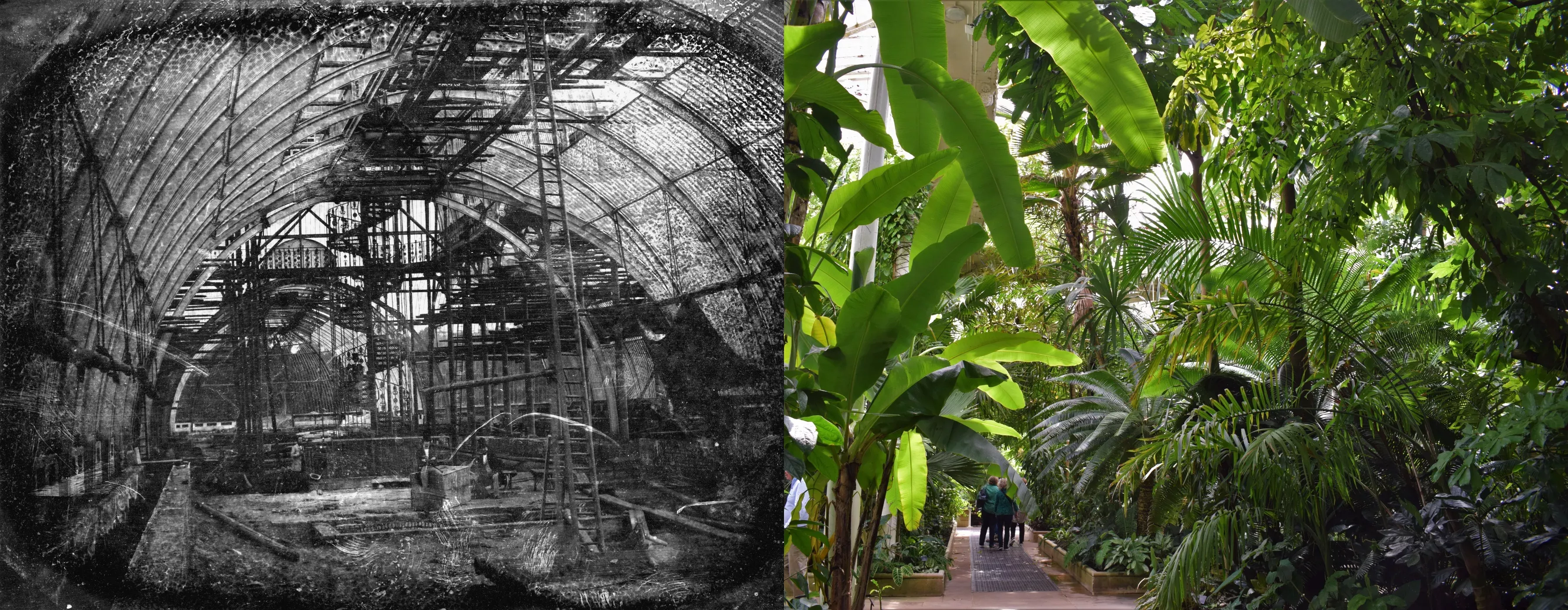
The campanile
Snapped between 1899 and 1908, this historical image shows the campanile in the distance behind the Palm House Parterre.
The elegant Italianate campanile, or bell tower, was originally built to disguise a chimney for the Palm House boilers.
Constructed by Thomas Grisell, the tower still stands today at nearly 33 metres tall.
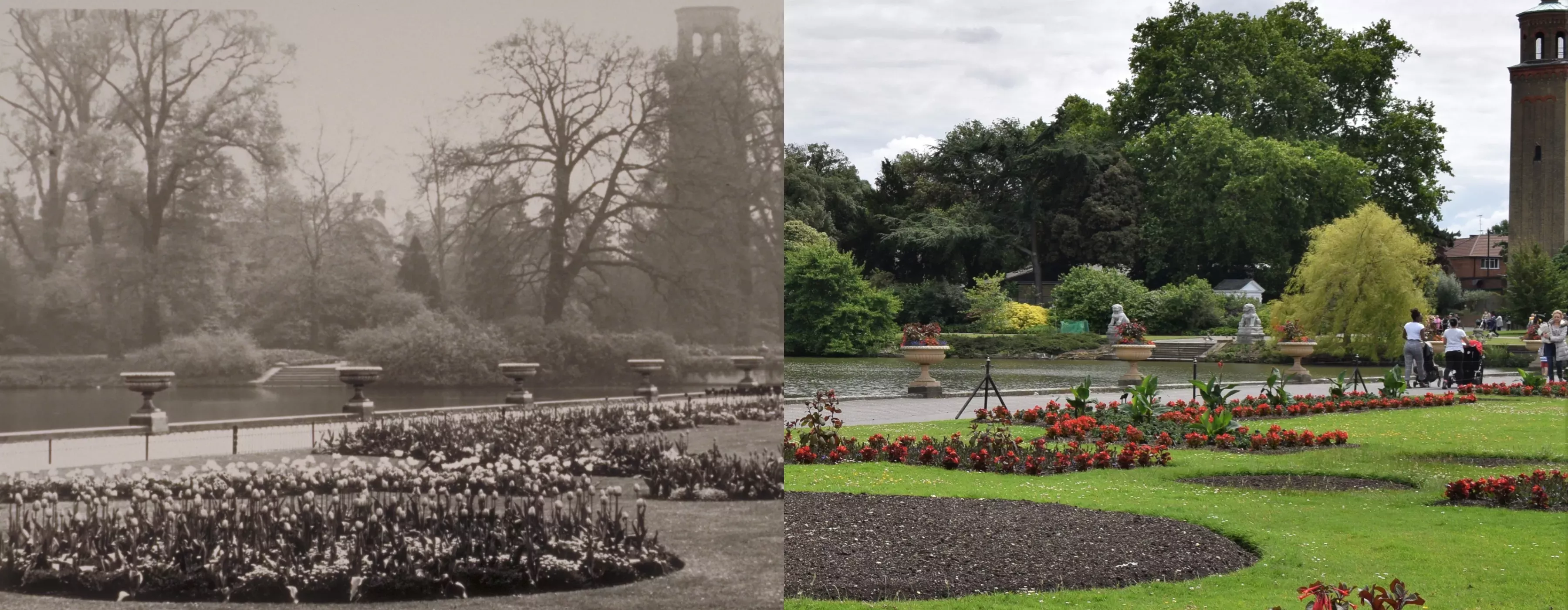
The Orangery
Sir William Chambers' Orangery is now a popular café offering tasty food and scenic views. But this wasn't always the case.
As its name suggests, the building, which was built in 1761, was made to cultivate citrus fruits.
But in 1863, the Orangery became Museum No. 3 and displayed Kew's wood collection. The black and white snap here was taken between 1890 and 1910 when the building was in this phase of its life.
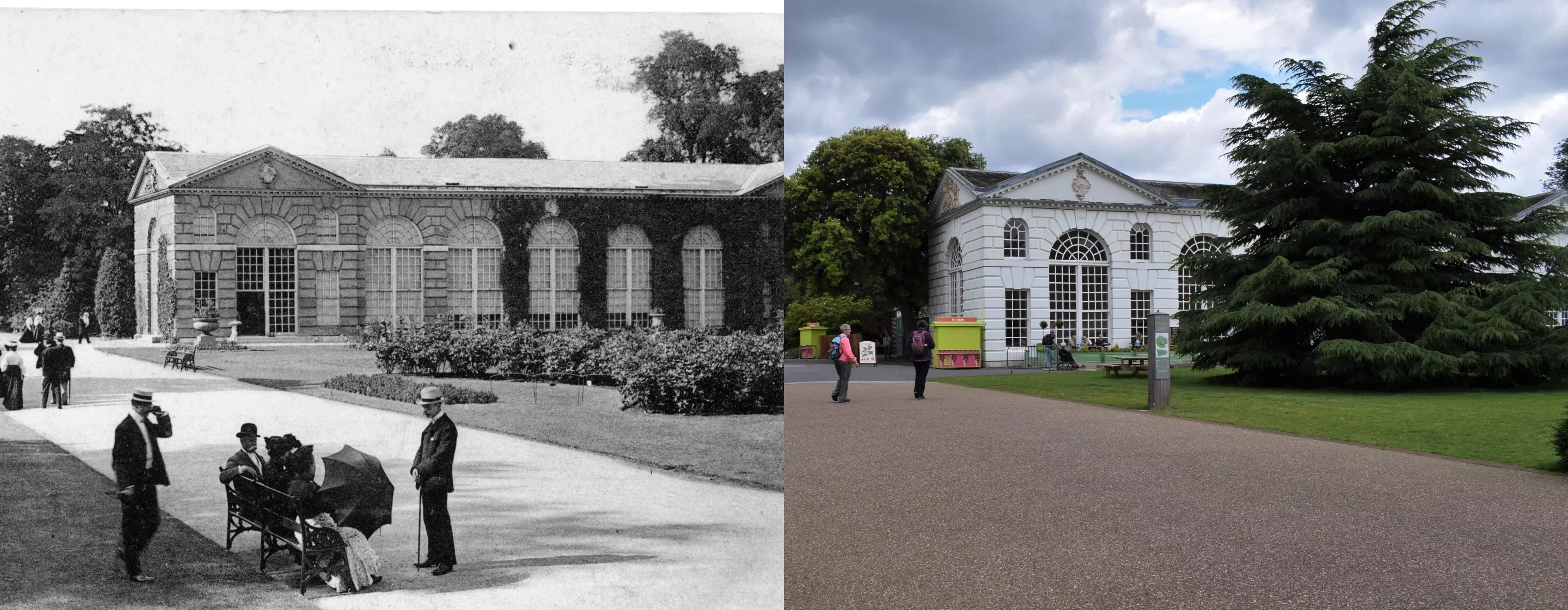
Queen Charlotte's Cottage
Nestled in the heart of our Natural Area, Queen Charlotte's Cottage has been through some changes since the late 1800s when this first photo was captured.
In 1898, Queen Victoria donated the cottage and its surrounding land to Kew.
Today, the picturesque building has no foliage on its external walls and the landscape has a different layout of trees.
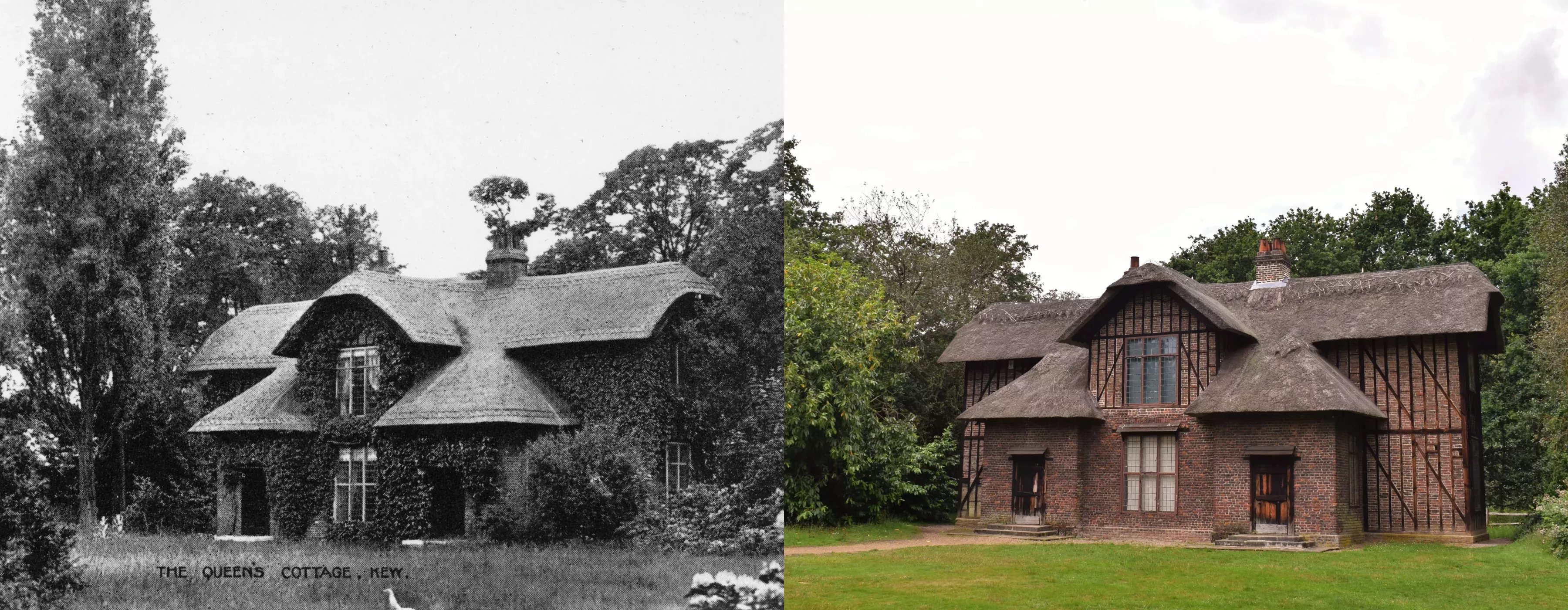
Cedar Vista
Our fashion choices may have changed but the view looking down Cedar Vista towards our iconic Pagoda is still similar to how it was in the late 19th century.
We've added some benches so visitors can better enjoy the Waterlily Pond and there are new plants in the landscape but the vista is as impressive as ever.
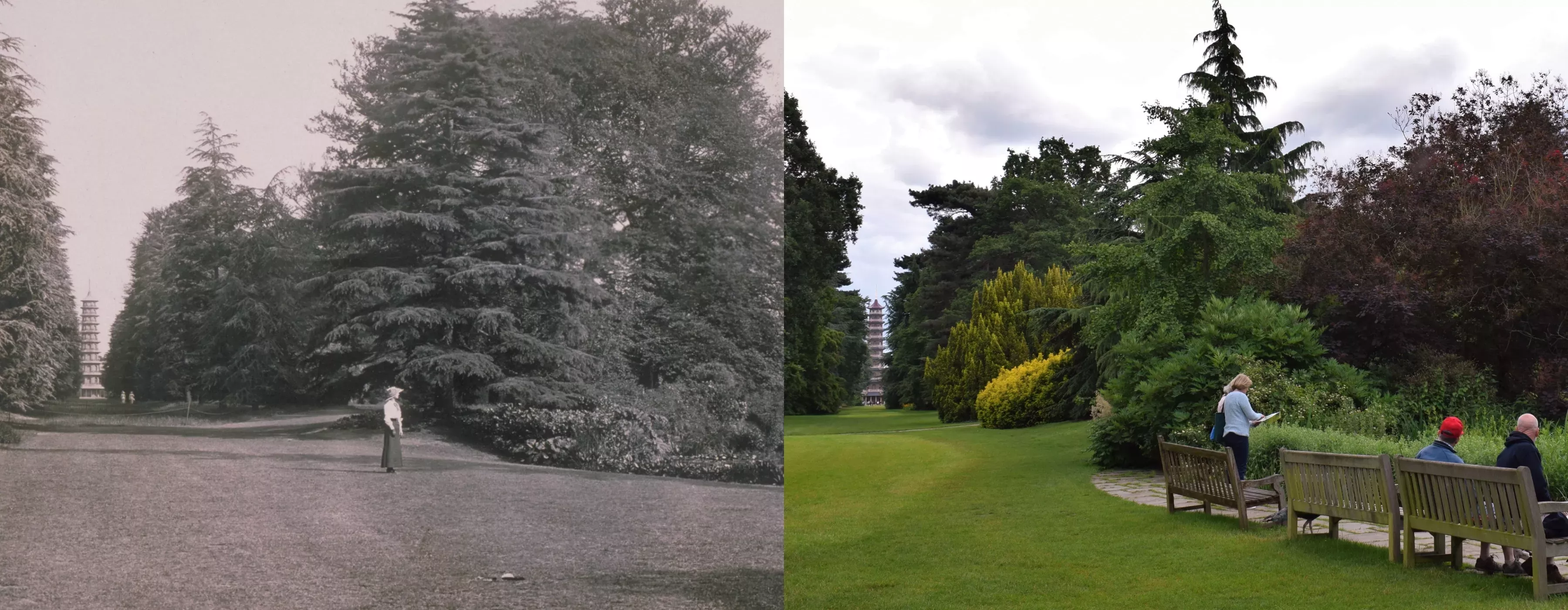
Pavilion Bar and Grill
The dramatic contrast between our original Tea Pavilion and newly refurbished Pavilion Bar and Grill is down to more than just a redesign.
The original building was famously burned to the ground by suffragettes Olive Wharry and Lilian Lenton in February 1913.
This old photo was taken before it was destroyed sometime between 1888 and 1913. In its place now sits our elegant and contemporary restaurant.
